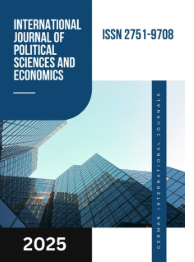INTERNATIONAL FINANCIAL INSTITUTIONS AND THEIR IMPACT ON DEVELOPING COUNTRIES
DOI:
https://doi.org/10.55640/Keywords:
international financial institutions, developing countries, international monetary fund, world bank, economic development, structural adjustment programs, foreign aid, global finance, debt relief, conditional lending, technical assistance, poverty reduction.Abstract
This article examines the role and impact of International Financial Institutions (IFIs) on the economic development of developing countries. It provides an overview of major IFIs, including the International Monetary Fund (IMF), the World Bank, and various regional development banks, highlighting their functions in providing financial aid, technical assistance, and policy advice. The article outlines the positive contributions of IFIs—such as access to capital, infrastructure development, and poverty reduction—while also addressing key criticisms, including issues of debt dependency, conditionality, and social impacts. The article concludes by discussing recent reforms within IFIs and the emergence of new development banks, calling for a more inclusive and context-sensitive approach to international development finance.
References
1.Stiglitz, J. E. (2002). Globalization and Its Discontents. W. W. Norton & Company. Reflects on the effects of IMF and World Bank policies on developing economies.
2.Vreeland, J. (2003). The IMF and Economic Development. Cambridge University Press. A political economy analysis of conditional lending
3.Prasad, E. S., Rogoff, K., Wei, S.–J., & Kose, M. A. (2003). Effects of Financial Globalization on Developing Countries: Some Empirical Evidence. IMF Occasional Paper No. 220. Washington, DC: International Monetary Fund
4.Näsström, S. (2000, December). Capacity Building in Africa: The Role of International Financial Institutions. Finance & Development. IMF
5.Berensmann, K., & Wolff, P. (2014). The role of international financial institutions in macroeconomic crises: Improving the architecture of the World Bank and the IMF for managing shocks in developing countries (Discussion Paper 33/2014). Bonn: German Development Institute.
6.Léon, F. (2025, March). Development Finance Institutions in Developing Countries: A Literature Review (FERDI Working Paper P350). Fondation pour les Études et Recherches sur le Développement International
7. Labonté, R., Mohindra, K. S., & Schrecker, T. (2017). International financial institutions and human rights: Implications for public health. Public Health Reviews, 38, Article
8.Shams, R. (1988). The World Bank’s structural adjustment loans: A critique. Intereconomics, 23(5), 208–211
9.IMF & World Bank debate on debt diplomacy: Debt-trap diplomacy. (2025). In Wikipedia. Retrieved from updated entry
10.Overview of structural adjustment policies: Structural adjustment. (2025). In Wikipedia. Retrieved from updated entry .
Downloads
Published
Issue
Section
License

This work is licensed under a Creative Commons Attribution 4.0 International License.
Authors retain the copyright of their manuscripts, and all Open Access articles are disseminated under the terms of the Creative Commons Attribution License 4.0 (CC-BY), which licenses unrestricted use, distribution, and reproduction in any medium, provided that the original work is appropriately cited. The use of general descriptive names, trade names, trademarks, and so forth in this publication, even if not specifically identified, does not imply that these names are not protected by the relevant laws and regulations.







